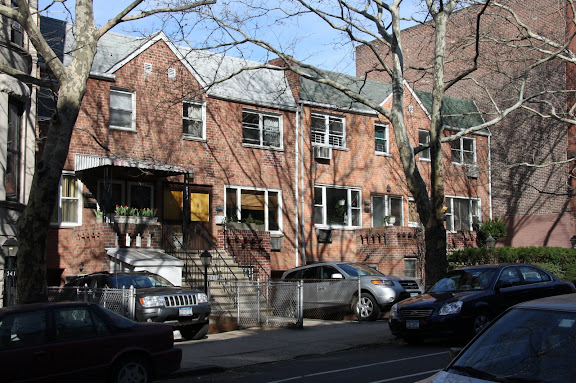Below is a closer view of one of these buildings from the south side of the same block. The doorway is protected by a flat entablature, flanked by columns. The central windows above the doorway light the interior staircase. First above the doorway is a rounded window with "Greek Ear" enframement; next up has a Gothic-style pointed arch; the window above that is a "flattened segmental" arch, rounded but flattened at the same time (there is probably a technical term for this, unknown to me):
 458 3rd Street - unprotected
458 3rd Street - unprotectedMeanwhile, just around the corner in 6th Avenue, toward 2nd Street, one finds nearly identical buildings... except 4-family, not 8-family, with windows that are "the same yet different". Note the identical doorways, flat entablature flanked by columns, and similarities in the window treatment above: Gothic-style pointed arch, with "flattened segmental" above that:

















